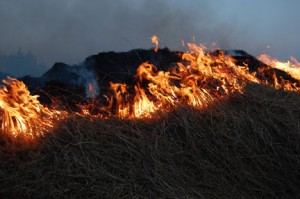 The Australian Forest Products Association (AFPA) has called on all Governments to look at the emerging science and evidence on new ways of addressing bushfires. Source: Timberbiz
The Australian Forest Products Association (AFPA) has called on all Governments to look at the emerging science and evidence on new ways of addressing bushfires. Source: Timberbiz
“Last year the Australian Government allocated $1.5 million to conduct a series of trials to physically remove shrubs, smaller trees and undergrowth from bushland by machinery rather than solely relying on controlled burning in winter,” AFPA Chief Executive Officer, Mr Ross Hampton said.
“There are a number of benefits from this practice as a complement to controlled burning, including community concerns over air quality, not being limited by weather conditions and managing fuel loads that are close to built-up areas.
“The national trials project is extremely important but only a drop in the ocean compared to the resources spent on implementing controlled burning and fighting bushfires each year.
“Hotter and more frequent fires driven by a changing climate are costing this nation dearly. Deloitte Access Economics estimated the total economic cost of bushfires to be $360 million in 2014. If left unchecked they estimated these costs to be as high as $800 million per year by 2050.”
“We are about a decade behind some other countries. The United States is halfway through a 10 year, $400 million program to remove excess fuels using machinery.”
According to the Australian Forest Contractors Association, costs can be counted in dollars but also in human and animal life and these costs will continue to rise unless we call on our forestry industry and governments to address the problem.
“The Australian Forest Contractors Association (AFCA) should be an integral part of the solution,” said Mr Ian Reid, Chairmen, AFCA. “However, we want to be part of a sensible solution and that is more than just controlled burning.
“Our members are experts in forestry and we know that there are better methods to employ to keep our communities, wildlife and farmlands safe.”
As forest contracting businesses our members are a good source of information on how the process should be conducted and where it is of most benefit.
We concur with the Australian Forest Products Association (AFPA) and other forestry bodies who have called for State and Federal Governments to look at current overseas practices and the science behind them so that we can address this issue in a considered and thoughtful manner.
An AFPA commissioned Deloitte Access Economics scoping study into the costs and benefits of adopting a similar approach in Australia found that, in locations close to cities, adding some mechanical removal to winter burn offs had a benefit cost ratio of 6. Meaning for every dollar spent our communities reaped $6 of benefit.
“One of the major benefits was a reduction in smoke and associated health costs for people in towns and communities in bush-fire prone areas, which included less atmospheric particulate matter and potential hospitalization,” said Mr Hampton.
“All jurisdictions should be embracing the fuel removal trials and leaving no tool in the shed when it comes to dealing with bushfires.”





